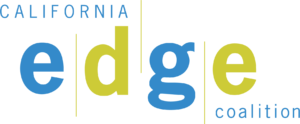EDGE has long supported creating an education and workforce data system to answer critical policy questions, implement effective practices, and improve student outcomes. The recently released Workforce Dashboard is the first step in this direction. In 2014, EDGE initiated and supported legislation, Assembly Bill 2148 (Mullin) that mandated the development of an interagency annual workforce metrics dashboard that includes participant demographic information and outcomes from most of California’s major workforce education and training programs.
What did we learn?
- Women, Blacks, and Hispanics almost consistently earned lower wages after program completion.
- Women were underrepresented in the state’s two learn and earn programs offered by the Employment Training Panel (ETP) and the Department of Industrial Relations’ Division of Apprenticeship Standards. Asians also are seriously underrepresented in apprenticeship programs.
- Earning a certificate almost always resulted in higher wages and a greater likelihood of employment, although the share of those attaining certificates was quite low. Degree attainment did not always result in higher wages, but as indicated by other research, earnings grow with age so the demographics of those pursuing degree attainment could be a contributing factor.
- Not surprisingly, median quarterly earnings were significantly higher in the learn and earn programs compared to the others (about $17,000 in the ETP and $18-19,000 in the apprenticeship programs, compared to about $8,000 in the community college and Workforce Investment Act Title I adult programs).
While the dashboard is an important first step in data sharing and reporting for workforce programs, additional data is needed to make this report a valuable tool to understand the outcomes of workforce education and training programs. The lack of similar metrics across programs presents serious limitations to this report. Data on enrollments as compared to completions and the types of occupations trained for are two examples of information that would make this a more valuable tool.
Furthermore, as California considers creating a statewide integrated data system and a higher education coordinating body serious attention must be paid to how to integrate the dashboard effort into an overarching data system that can be accessed by students, policymakers, and other stakeholders to guide decision making and program improvement.
